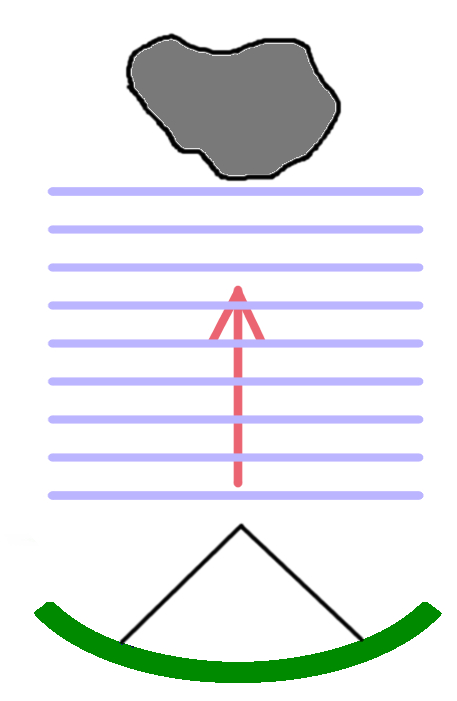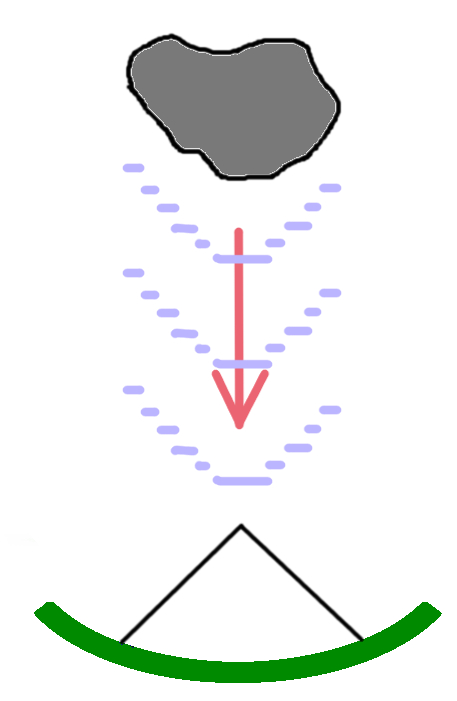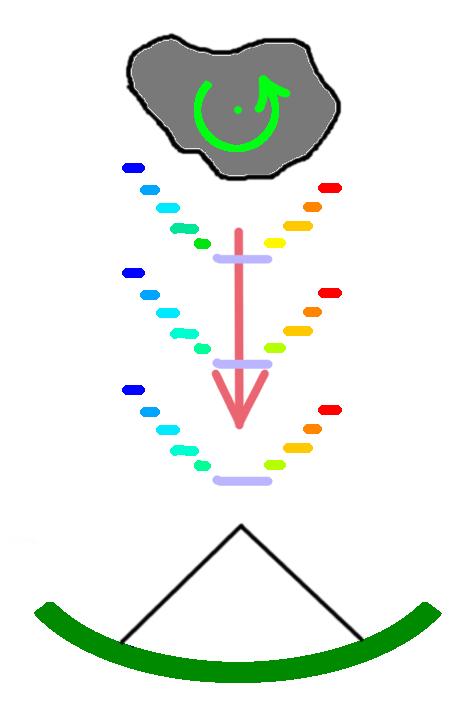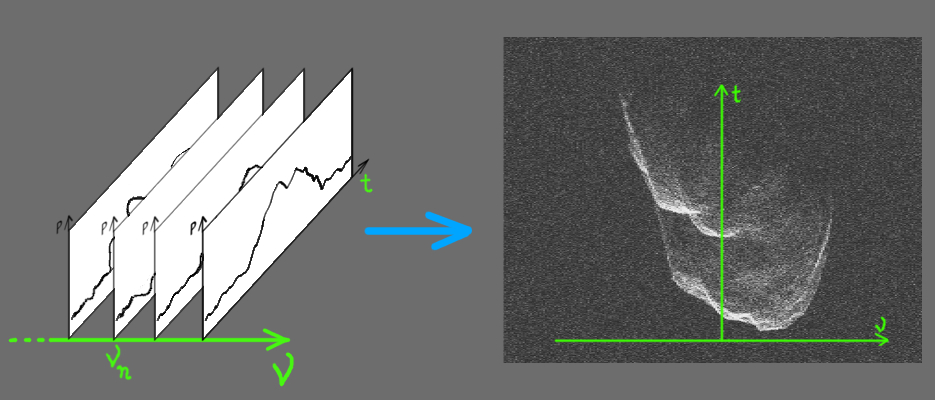Radar
Radar is an interesting and powerful technique used to retrieve information about asteroids. Its uniqueness lies in control of the transmitted signal, which is not the case in other techniques, like photometry. Thus, radar observations can be described as an experiment.
Radar technique is used to study Near Earth Asteroids (asteroids that pass close to Earth). Signal from telescope fades very quickly with distance, and strongly limits the range of such observations.
Time delay
Signal is sent from radio telescope and bounces off the surface of the target body to be then recorded back on Earth. Asteroids come in variety of shapes, and signal travels different distance depending on the part of asteroid that it hits.


Echo (returning signal) arrives in different time, which is translated into the distance (signal travels at the speed of light).
The Doppler effect
Asteroids rotate! We can use this phenomena and take advantage of the Doppler effect. Every point from which signal bounces off becomes a source of signal that returns to the observer.
Ever noticed the change of pitch of sound of passing ambulance? The sound has higher frequency when siren is moving towards you compared with when it is not moving. And it has lower frequency when it is moving away from you.
Well.. the same applies to light! When light emitting (or reflecting) object moves towards you, the light that you will register will have higher frequency then emitted (reflected) light. In astronomy we say that this light is "blue-shifted". Similarly, if the object is moving away from you, its frequency is lower, and the light is "red-shifted".
Radar signal, when bounced off the surface of rotating asteroid, also gets blue and red shifted. This is fantastic news!

When asteroid rotates, the farther we are from the spin axis, the bigger the velocity of the surface element is. That means we can observe this when we look at echo's shift in frequency registered by radio telescope. Now, we not only have the information about surface element's distance form us, but also about its radial velocity.
Unfortunately, we don't know which part of asteroid has given velocity and distance. But, we can try to make some sense of collected data.
If we plot a two-dimensional image of radar data we will get some interesting results. Every pixel on radar-echo image is an intensity of returning signal at given time delay (distance) and frequency (velocity).

Simulation
If we want to use radar images to model an asteroid, we have to simulate radar observations of a model and compare it with observations. Here is an example of such simulation:
- bottom right: velocities of surface elements
- blue - towards observer
- red - away from observer; more colour = bigger velocity
- top right: view of asteroid as if it was observed with photometric telescope
- top left: top view of asteroid (perpendicular to the line of sight)
- bottom left: radar image
